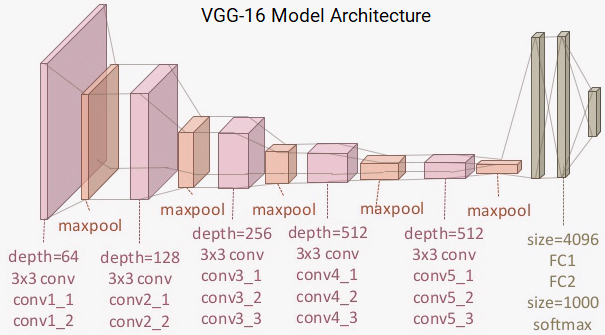The VGG-16 model is a 16-layer (convolution and fully connected) network built on the ImageNet database, which is built for the purpose of image recognition and classification. This model was built by Karen Simonyan and Andrew Zisserman and is mentioned in their paper titled Very Deep Convolutional Networks for Large-Scale Image Recognition, arXiv (2014), available at https://arxiv.org/pdf/1409.1556.pdf.
I recommend all interested readers to go and read up on the excellent literature in this paper. The VGG-16 model was briefly mentioned in Chapter 3, Understanding Deep Learning Architectures, but we will discuss it in more detail and also leverage the same in our examples. The architecture of the VGG-16 model is depicted in the following diagram:

You can clearly see that we have a total of 13 convolution layers using 3 x 3 convolution filters along with max pooling layers for downsampling and a total of two fully connected hidden layers of 4,096 units in each layer followed by a dense layer of 1,000 units, where each unit represents one of the image categories in the ImageNet database.
We do not need the last three layers since we will be using our own fully connected dense layers to predict whether images will be a dog or a cat. We are more concerned with the first five blocks, so that we can leverage the VGG model as an effective feature extractor. For one of the models, we will use it as a simple feature extractor by freezing all the five convolution blocks to make sure their weights don't get updated after each epoch. For the last model, we will apply fine-tuning to the VGG model, where we will unfreeze the last two blocks (Block 4 and Block 5) so that their weights get updated in each epoch (per batch of data) as we train our own model.
We represent the preceding architecture, along with the two variants (basic feature extractor and fine-tuning) that we will be using, in the following block diagram, so you can get a better visual perspective:

Thus, we are mostly concerned with leveraging the convolution blocks of the VGG-16 model and then flattening the final output (from the feature maps) so that we can feed it into our own dense layers for our classifier. All the code used in this section of the chapter is available in the CNN with the Transfer Learning.ipynb Jupyter Notebook.
